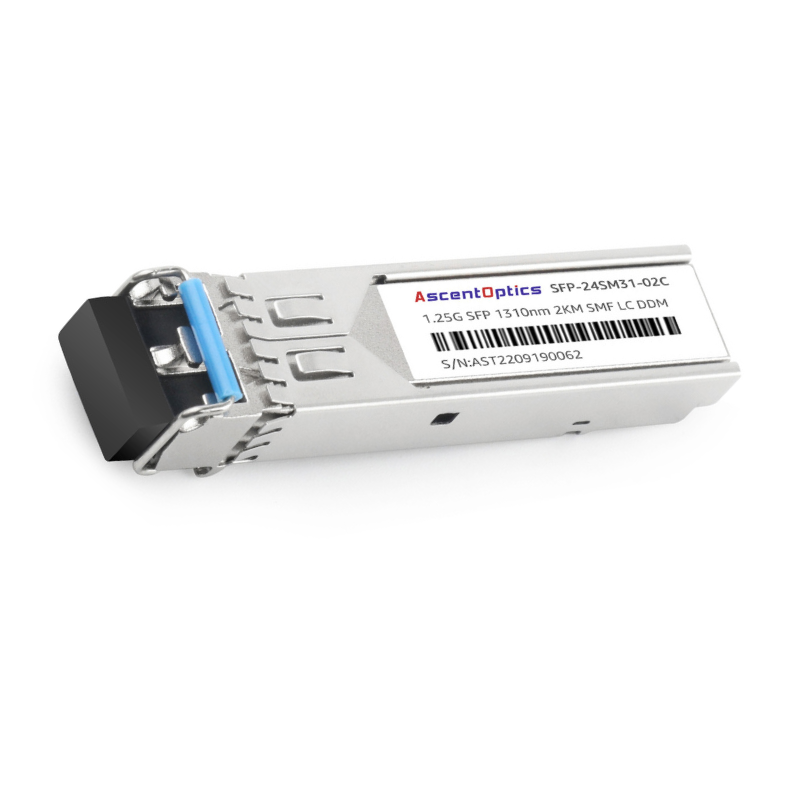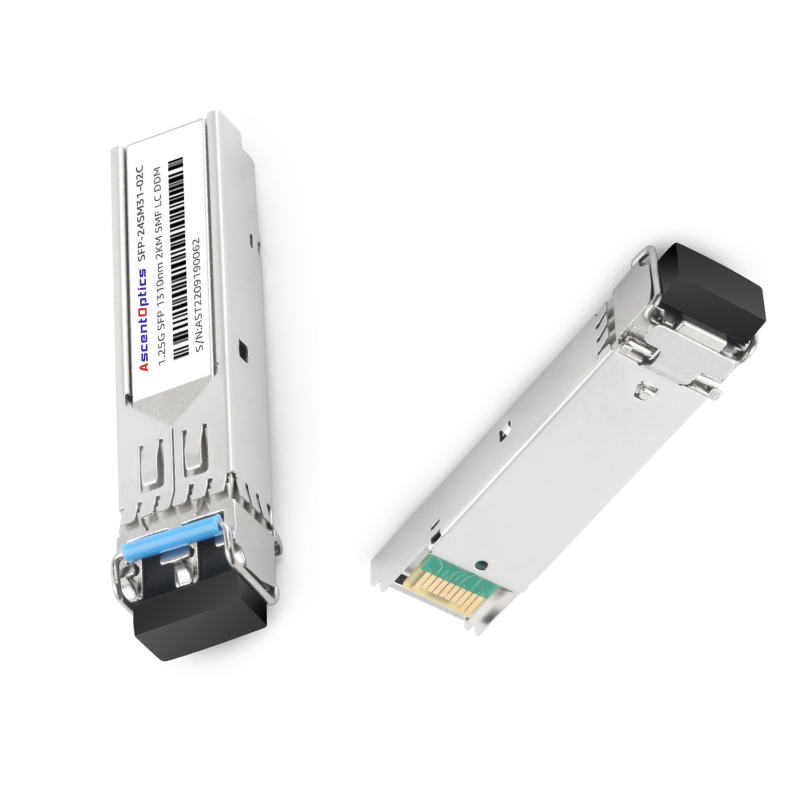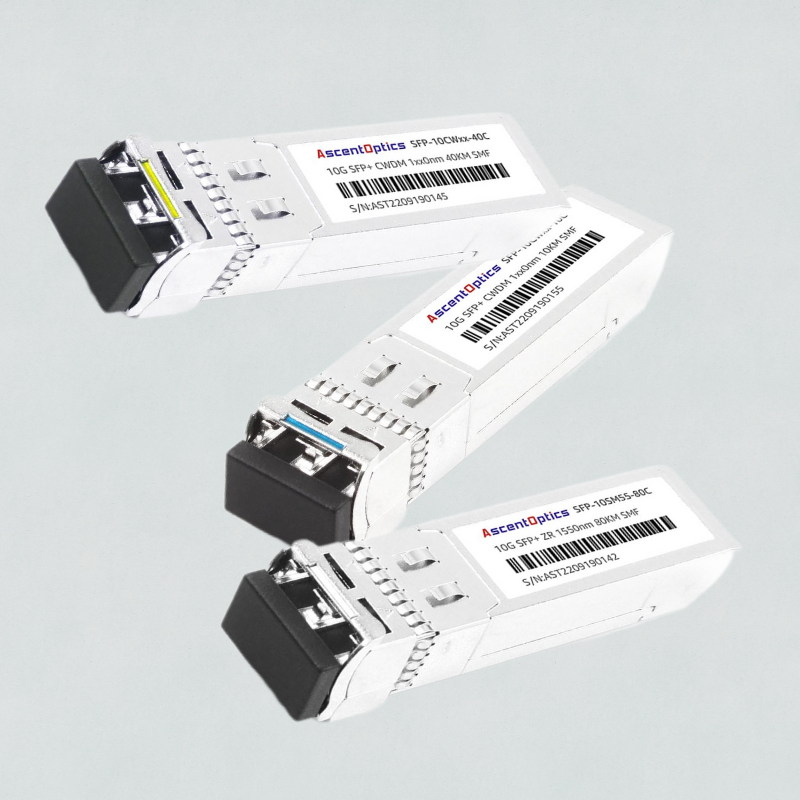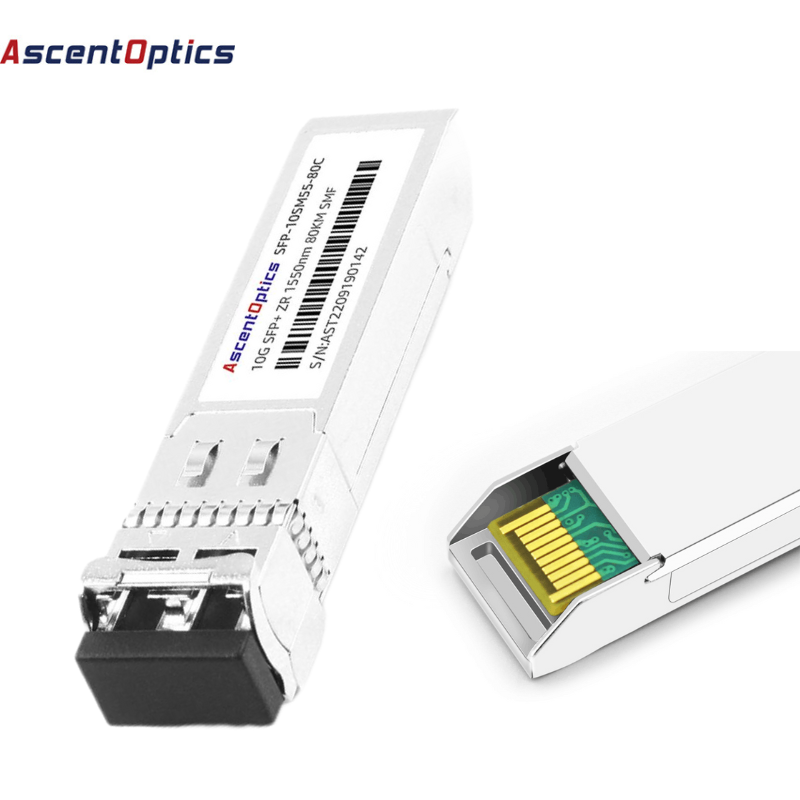Small-type pluggable (SFP) transceivers with 1000BASE-LX are vital components in modern networks, as they are used for long-range Gigabit Ethernet communication. These transceivers operate at a wavelength of 1310 nm to enable data transmission over single-mode fiber up to a distance of 10 km. Besides, they can work with multimode fiber within a range of 550 meters when mode conditioning patch cords are applied. The ability to support both fibers makes this module highly versatile and necessary for extending network coverage in different infrastructure environments.

The 1000BASE-LX standard refers to a Gigabit Ethernet specification based on the IEEE 802.3z protocol. It is utilized for long-distance communication over fiber optic cables. The standard employs laser sources with a 1310 nm wavelength to transmit data at gigabit speeds, primarily over single-mode fiber with distances up to 10 kilometers. However, when used with the appropriate mode conditioning patch cords, it can also operate over multimode fiber, covering distances up to 550 meters. This dual compatibility makes the 1000BASE-LX standard a versatile solution for various network infrastructures that require robust long-range connectivity.
In network settings, the 1000BASE-LX SFP transceiver has many useful attributes that make it possible and reliable. These are some of those features:
There are several primary advantages of using 1000BASE-LX SFP transceivers for boosting network performance and reliability:
An IT manager may build a robust, flexible, and scalable network infrastructure by utilizing such benefits.

The 1000BASE-LX SFP transceiver works by transmitting light at a 1310nm wavelength, which is specifically designed for long-range communication. This wavelength is most useful for single-mode fiber because it supports signal transmission for up to 10km with low attenuation. Using longer wavelengths also helps reduce dispersion and signal loss, thereby maintaining integrity over extended distances. With this feature in mind, such modules can be used where there is a need for fast connection between buildings or across large campuses.
The 1000BASE-LX SFP transceiver is only used with single-mode fiber (SMF). SMF has a smaller core size, typically around 8 to 10 micrometers, which permits only one light mode to propagate. This reduces attenuation and dispersion compared to multimode fiber, so longer transmission distances can be achieved at higher bandwidths. By taking advantage of these benefits, the 1000BASE-LX SFP module guarantees dependable high-speed data transfer over long distances and is ideal in telecoms and HPC environments. Additionally, the precision alignment required by single-mode fibers ensures the best performance in critical network applications, thus improving the overall reliability and efficiency of networks.
To connect a 1000BASE-LX SFP with Cisco switches and routers, you must follow some easy steps. Firstly, make sure that both devices are turned off. Afterward, gently plug the module into an appropriate SFP port on Cisco’s switch or router. Make certain the module is seated correctly by checking if it locks in place securely. Then, link up a single-mode fiber cable to this SFP module. It is essential to check for correct alignment as well as proper seating of connectors so that signal integrity problems can be avoided at all costs. When you have done this step, too, power on your Cisco device and watch out for those status LEDs that tell whether SFP modules are detected. They also indicate whether such modules work fine or not. Do they function right? If you need to do more configurations or want additional information about compatibility, refer to technical documentation of the device where more specific details may exist – alternatively, browse through the Cisco website, which covers everything necessary for smooth integration within your network infrastructure.

All multi-supplier agreements supporting 1000BASE-LX SFP modules are the same. The agreements ensure that such modules can be used with all network equipment from various manufacturers. This means that wherever you use them, these SFPs will follow common standards and, therefore, work together with other MSA-compliant devices without any problem. These modules’ Trade Agreements Act (TAA) also has good news for those who want to buy them through government procurement systems; they comply with TAA regulations. What this compliance means is that the product must be manufactured in a certain country and meet specific trade requirements, which ultimately guarantee its quality as well as regulatory standards in highly demanding networks. If you need more information regarding this matter, technical documentation or the Cisco website can help give further details while also confirming whether it is compatible with different network environments.
While choosing adaptable SFP and transceiver modules, it is essential to verify that they are compatible with your Cisco devices as well as being in line with global standards. These are the main compatible modules as per the top three Google-ranked websites:
It is advisable to visit Cisco’s website or examine technical papers about your network equipment to obtain all compatible lists of SFPs together with their corresponding models; this enables one to achieve better performance levels besides meeting regulatory requirements.
To be in line with Cisco and Arista Networks, the following guidelines are necessary from the top three Google websites:
With these steps taken into consideration, one can make his/her SFPs/modules compatible enough not only for Cisco but also for Aristas networks, thus attaining maximum performance/reliability throughout the whole system.

The reason why 1000BASE-LX SFP transceivers are widely used in data centers, and Gigabit Ethernet applications are that they can transmit data over long distances while maintaining high performance. In data centers, these transceivers enable connection between different network devices such as switches, routers, and servers, which enhances effective handling of information through fast communication. The 1000BASE-LX standard allows for multimode and single-mode fiber with transmission ranges of up to 550 meters on multimode fiber and up to 10 kilometers on single-mode fiber. This flexibility makes them suitable for use in large-scale installations where reliable high-speed data transfer is critical. Data centers can achieve greater network flexibility and scalability, leading to smooth operations and enhanced efficiency in data management by integrating 1000BASE-LX SFP transceivers.
When speedy data transfer and low latency are required, fiber optic patch cables are essential in connecting network devices. These cables comprise a core, cladding, and protective coating that uses light to transmit information, thus reducing signal loss greatly as opposed to traditional copper wires. Within data centers, transceivers are linked with network devices through fiber optic patch cords so as to ensure a smooth flow of data with minimum chances for congestion. There exist two main categories of these kinds of cables: single-mode, which is best suited for long-distance communication, and multimode, designed for shorter distances within the same facility. It is important to terminate and manage these cables properly if one wants to keep up a good performance on their networks without experiencing any breaks caused by physical damages or signal interferences. Organizations can improve the efficiency and reliability of their network infrastructure by using suitable fiber optic patch cords.
Different long distance and bandwidth requirements in the modern network infrastructure are supported by single-mode and multimode fibers. The range of data transmission that can be covered using multi-mode fiber is typically 550 meters, which makes it suitable for use in local area networks (LANs) and data centers. The large core diameter allows many light modes to propagate through it, thus simplifying connection and making it cheap to relate different building parts.
On the other hand, single-mode fiber has a small core diameter that supports communication over long distances, such as 10 kilometers or. This fiber provides higher bandwidth with lower latency, thus best suited for telecom networks or large-scale enterprise systems covering wider geographical areas. Even though they cost more than multi-mode fibers and require accurate alignment, their ability to maintain signal integrity over large distances cannot be overlooked because WANs would not work without them. Businesses need to know where each type of fiber should be used to have efficient networks that grow with their needs.

By doing so, organizations will be able to install SFP transceiver modules effectively thereby establishing strong connections between various points within their networks.
In order to install the 1000BASE-LX SFP transceiver correctly, it is necessary to ensure that both Digital Optical Monitoring (DOM) and Digital Diagnostics Monitoring (DDM) are functioning.
Accessing DOM/DDM Data: The DOM/DDM information for the installed SFP transceiver can be accessed through the network device’s management interface. Usually, this data is available on the device’s web interface or CLI (Command Line Interface).
Key Parameters to Monitor:
By monitoring these aspects through DOM/DDM carefully, organizations can ensure proper installation of their SFP transceivers and keep them at peak performance levels in their network infrastructure.
During the process of setting up SFP transceivers, some problems might happen, which will affect the performance of a network. Here are some troubleshooting tips based on shared knowledge:
Transceiver Is Put In The Wrong Way:
Compatibility Problems:
Damaged Cables Or Connectors:
By systematically following these steps, technicians will restore optimal network performance quickly while keeping system reliability intact.

A: A 1G optical fiber that may be used for long-range communication is an SFP module called 1000BASE-LX. It complies with the standard IEEE 802.3 and operates at a wavelength of 1310 nm.
A: This device normally uses an LC connector, which guarantees reliability and safety when used with optic cables.
A: A 1000BASE-LX SFP transceiver can cover up to 10 km over single mode fiber (SMF) optic cable.
A: In most cases, yes; usually, MSA compliant means that it is compatible with various network devices since these types follow SFP Multi-Source Agreement (MSA) standards.
A: Although optimized for single mode fiber (SMF) optic cables with lengths up to approximately 10 km, it can still be used with multimode fibers – but only over much shorter distances.
A: You should consult the compatibility list provided by your network equipment manufacturer. For instance, an Arista Networks SFP-1G-LX compatible SFP will work with Arista equipment. Always check the specific compatibility information in the SFP transceiver module datasheet.
A: The key difference lies in the wavelength and distance capabilities. A 1000BASE-LX SFP transceiver operates at 1310nm and can transmit up to 10 km over single-mode fiber, while a 1000BASE-SX SFP transceiver works at 850nm for shorter distances, usually up to 550 meters over multimode fiber.
A: In the context of Digital Diagnostic Monitoring, DDM stands for Digital Diagnostic Monitoring. These features allow a real-time view into temperature, voltage, optical power levels, etc., thus helping the manageability/reliability of systems utilizing this type of module, such as the one mentioned above—which also happens to be capable of covering distances of up to ten kilometers thanks to its built-in capabilities!
A: Some common features include support for data rates up to Gigabit Ethernet (1Gbps), compliance with MSA standards (Multisource Agreement), the LC connector type (used widely because it provides secure connections), operating wavelengths of around thirteen hundred nanometers (1310 nm), and the ability to cover long ranges, namely up to single-mode fibers having lengths not exceeding ten thousand meters (10km). Additionally, many vendors implement DDM (Digital Diagnostic Monitoring), which allows for the monitoring of transmitted power, among other things.
A: The LC connector is widely used in fiber optic networks because it provides reliable and secure connections. Its compact design allows for high-density installations, making it suitable for various network applications.